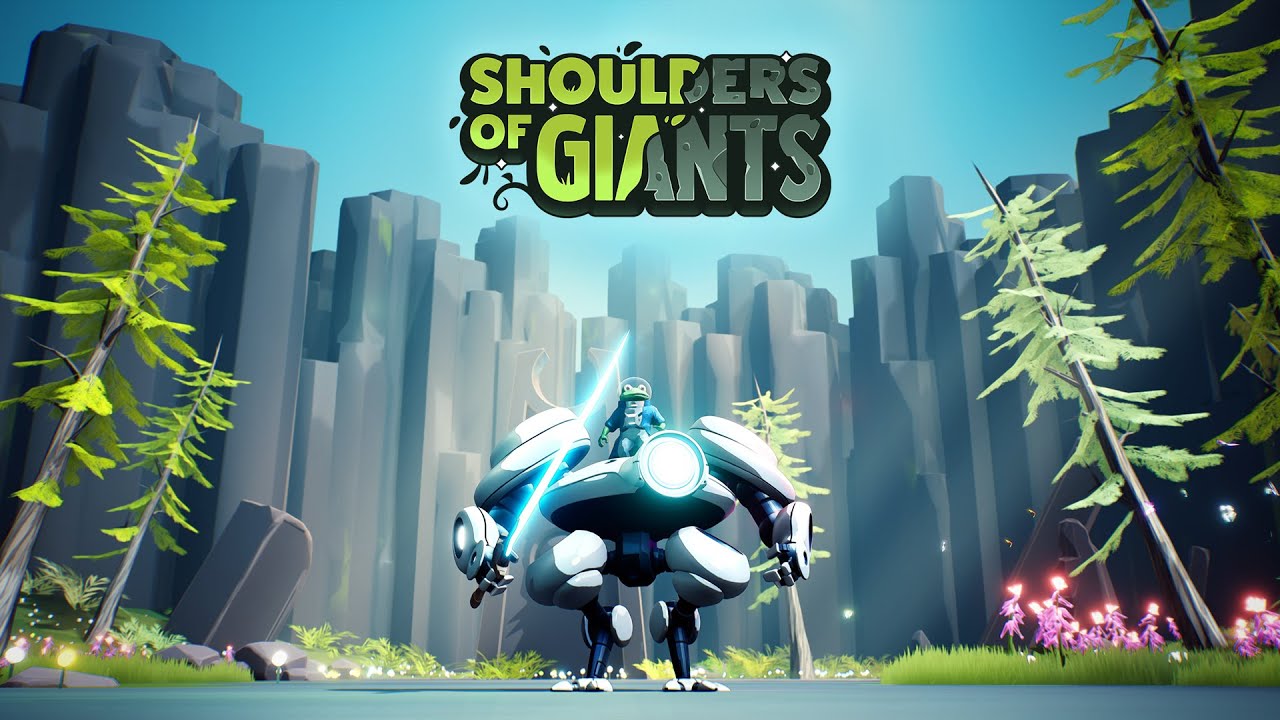
Shoulders of Giants sells itself as a game where the player controls two entities. In reality, the charming frog and mech combo are a single unit, like Blaster Master from The Road Warrior. They may as well be one character and the visual representation of them being individuals is purely cosmetic.
The premise revolves around going to various planets and terraforming the hostile environment into a lush splendor. There are ancillary characters and even a bit of backstory, but the lackluster and low-budget presentation won’t be sucking anyone in. There are no real cutscenes, just boxes of lengthy text and a static, goofy-looking character portrait that is drawn in a clashing cartoony style.
When amphibian and machine land on planet surfaces, their jaunt for survival begins. The procedurally generated locales are festooned with corrupt creatures and abominable aliens that have only one instinct: kill any frog on a robot they see. Terraforming doesn’t come easy in the galaxy, nor should it be in this Shoulders of Giants review!
This is a review coupled with a supplemental video review. You can watch the video review or read the full review of the below:
Shoulders of Giants
Developer: Moving Pieces Interactive
Publisher: Moving Pieces Interactive
Platforms: Windows PC, Xbox One, Xbox Series X|S (reviewed)
Release Date: September 17, 2022
Players: 1-4
Price: $19.99 USD
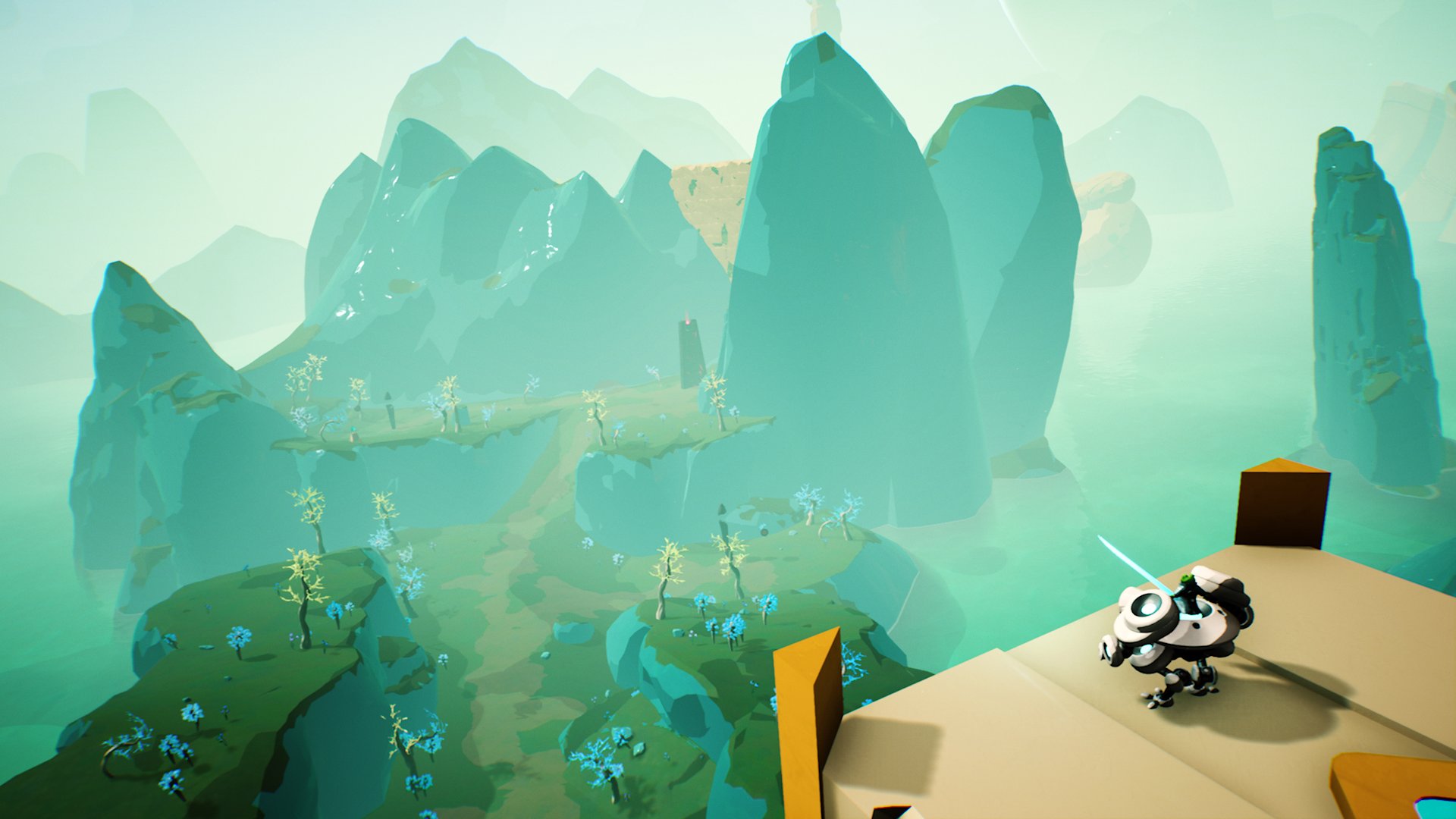
The first thing anyone will notice about Shoulders of Giants is its unique visual style. It has some cel shading and emphasizes geometric shapes with flat edges. Textures are intentionally sparse; with a greater focus on smooth and clean surfaces. Character designs are appealing and the anthropomorphic creatures resemble something out of a Star Fox game.
The procedurally generated environments look varied with the unusual rock formations and the way color is used helps make every toxic swamp look like a unique hellhole every time. Gimmicks like temples or launchpads, keep the environments varied enough to prevent runs from always feeling the same.
The only problem with the environment is the utter chaos and hostility. Due to the slippery controls, expect the chance of sliding off narrow ledges and falling to certain doom. The endless supply of primeval monsters and eldritch creatures won’t stop bum-rushing gamers until the orbs are destroyed.
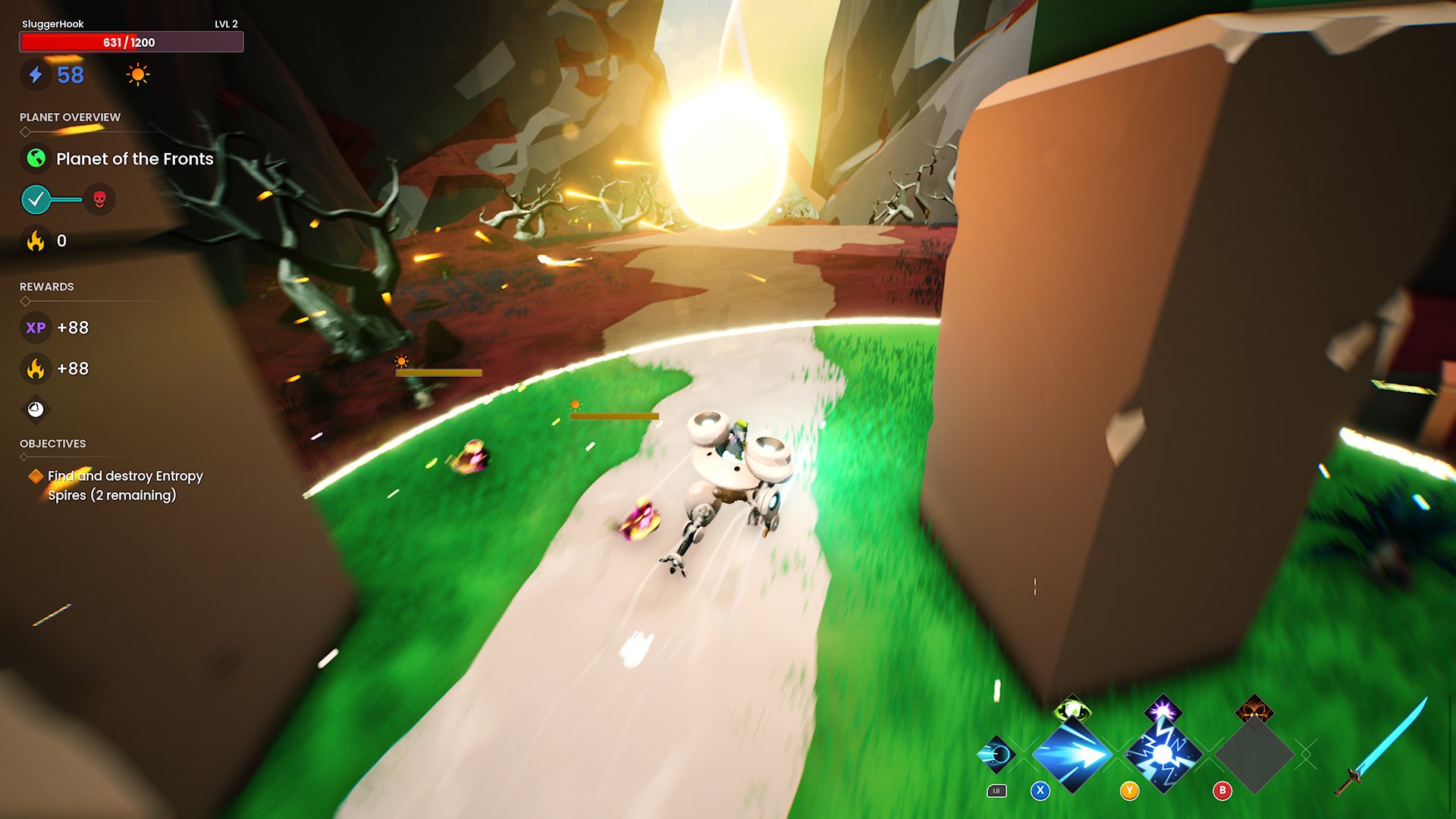
When all orbs are wiped out, the entire environment becomes safe and players can take a moment to breathe and relax while picking up any missed abilities that may be helpful in the next zone. Abilities can come in wide varieties and come in two types: robot and frog.
Melee or offensive abilities are traditionally for the robot and frogs specialize in support or ranged attacks. As Shoulders of Giants unfolds, late in the game the option to customize ability load-outs becomes available. Until then, expect to have to make do with whatever is lying around. This makes the experience feel desperate and like the characters are clinging to survival.
The abilities can seemingly be almost anything. Sometimes they may seem impractical, but the strange ways the levels can be generated can result in them having unbelievable utility. Normally an ability that lets you drop bombs infinitely while in mid-air seems useless when the robot has a short leap- but if the stage has leaping pads that shoot the player into the stratosphere then it becomes the key to defeating the area boss.
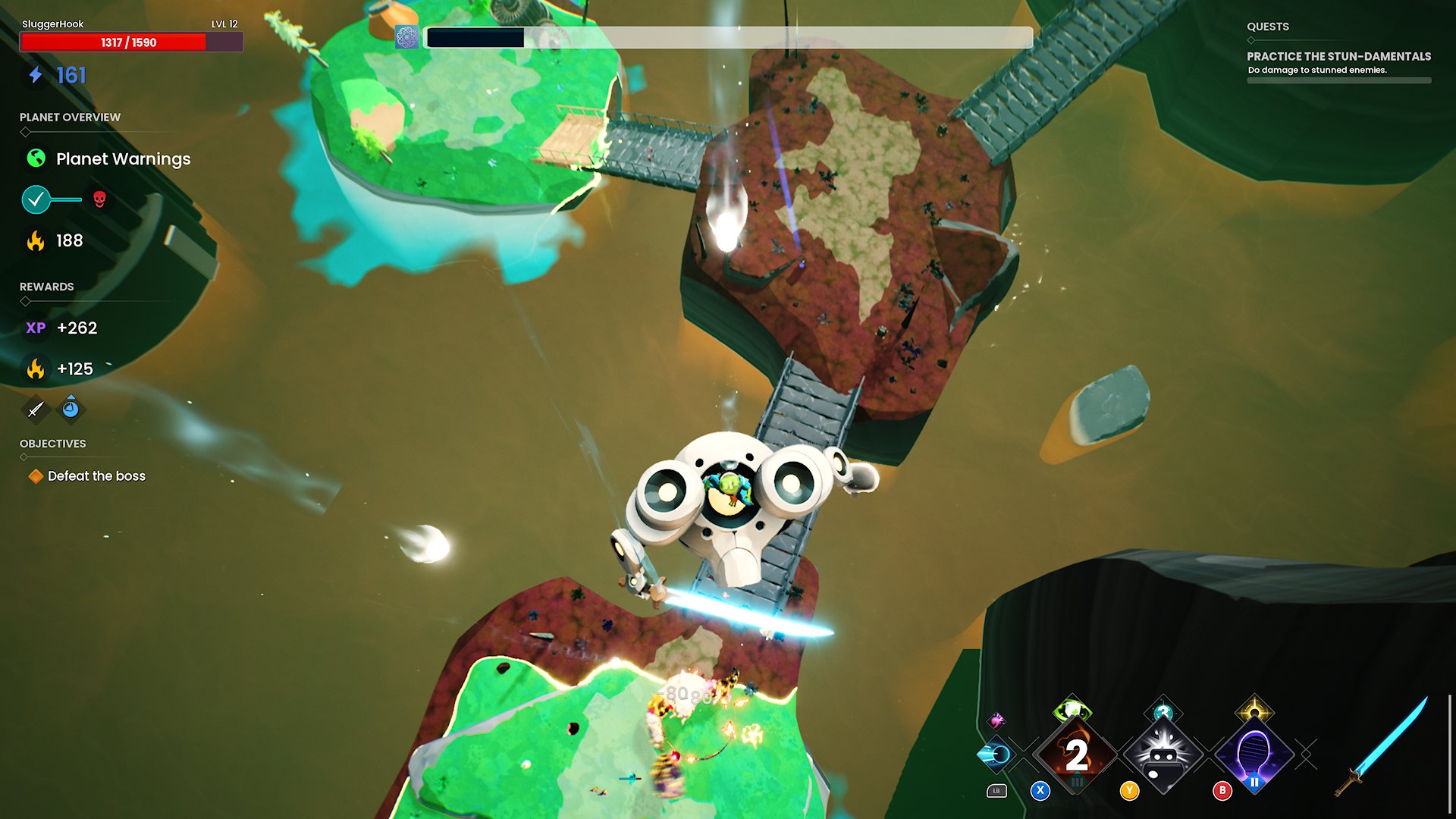
Emergent gameplay moments like using random abilities in creative ways are what makes Shoulders of Giants so interesting. Being creative with skills and using the land is a preferred offense in most cases because the shooting and melee attacks in this game are pathetic.
The audio and visual feedback while fighting is extremely lacking. Hits don’t feel like they connect when they do and the enemy’s reaction is jerky. The shooting animation with the frog is spastic and doesn’t align shots accurately. Aiming is jolty and the erratic frame rate doesn’t make it any easier.
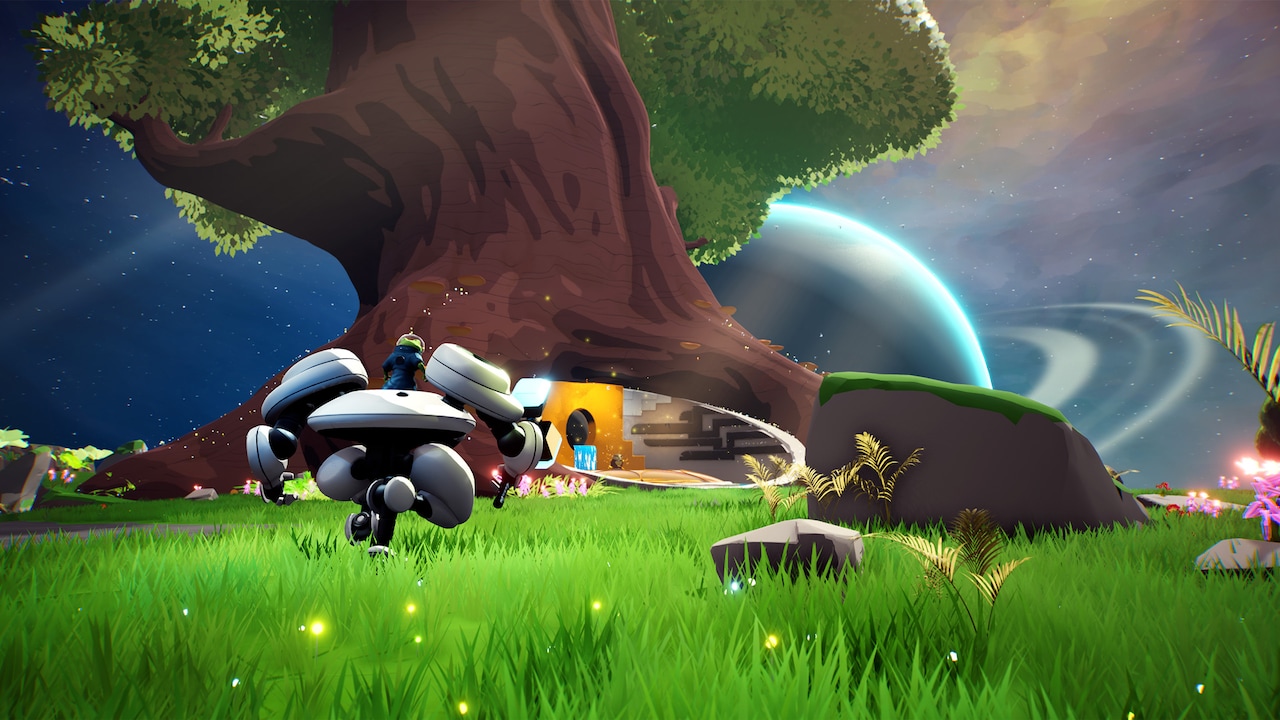
Fighting feels like a sputtering mess. Compounded with the strict cool-downs for all abilities, Shoulders of Giants will usually lead to frustration in the heat of battle. In time, the developers may tweak the mechanics and it may become more fluid and responsive, but at this juncture, the core fighting is unreliable when going up against large bosses and trash mobs.
It is too bad the fighting is so limp because the feedback loop of the grind is compelling. Gaining “heat” is the resource required back at HQ. The thing is, the more heat acquired, the more challenging Shoulders of Giants become. Dying lowers the heat and makes the game easier, turning the experience into tug-of-war friction with the games’ systems.
Thankfully, dying is a slap on the wrist. Frog and robot get experience points no matter what, so there is always progress being made. Even after dying a lot, expect to inevitably become powerful enough to overcome whatever the game throws at you.
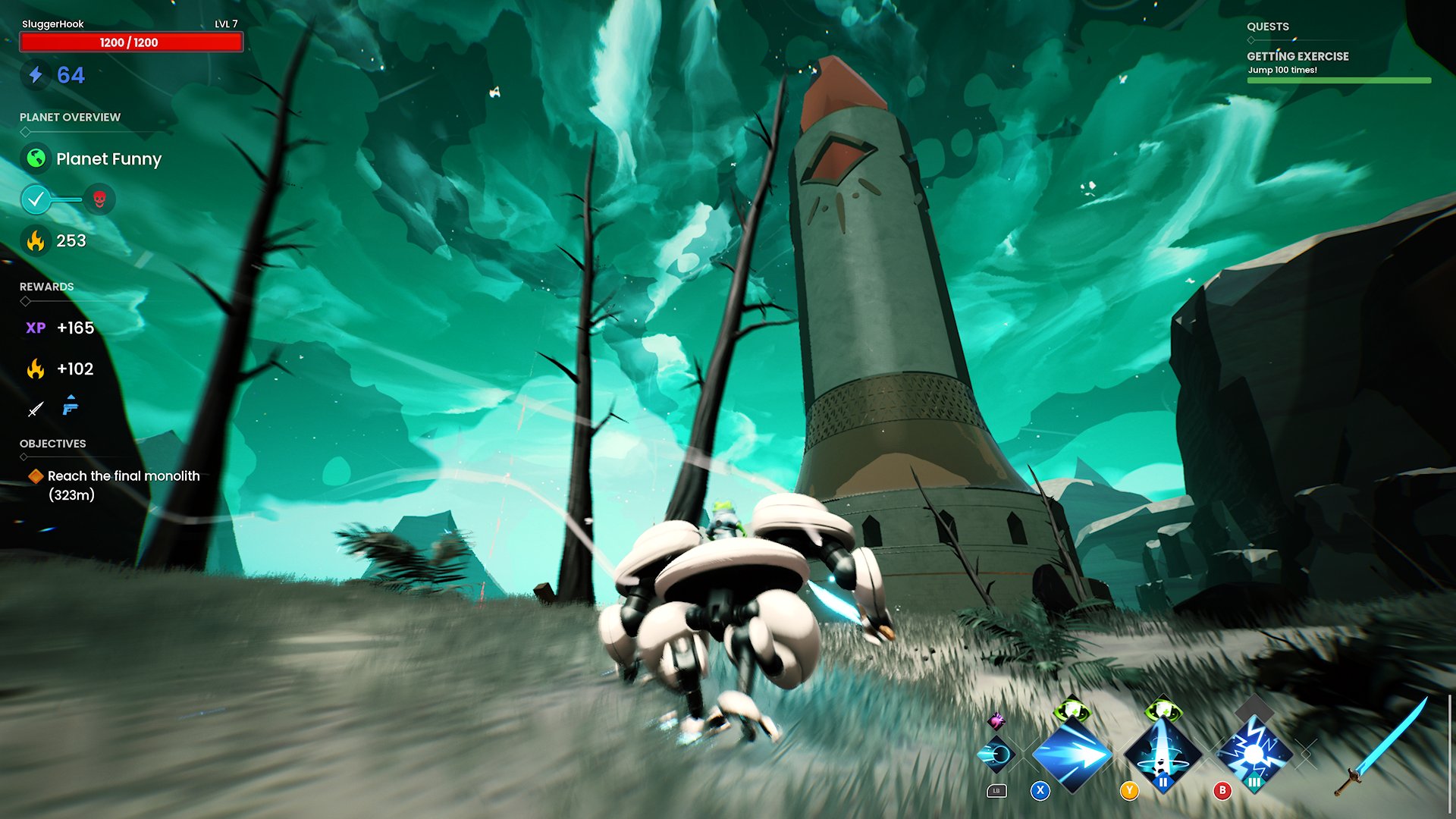
Shoulders of Giants has a lot of promise. The art style is unique and the overall game design has interesting moments where the player can become creative with their abilities. The technology used to generate the environment impresses with how varied and diverse it can be.
With a bit of time, Moving Pieces Interactive might be able to smooth out the combat and improve the frame rate. Hopefully, the developers can inject some personality into the characters and maybe flesh out the lore and story too.
Shoulders of Giants was reviewed on Xbox Series S using a copy provided by Moving Pieces Interactive. You can find additional information about Niche Gamer’s review/ethics policy here. Shoulders of Giants is now available for PC (via Epic Games Store), Xbox One, and Xbox Series X|S.